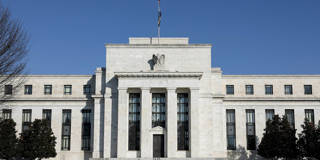After a 9% decline in the second half of 2020, the broad dollar index – the real effective exchange rate as calculated by the Bank for International Settlements – has gone the other way, soaring by 12.3% from January 2021 through May 2022. And yet the deterioration of the US current-account balance has continued.
NEW HAVEN – I should have listened to Alan Greenspan – at least when it comes to currency forecasting. The former chair of the Federal Reserve once told me it was a fool’s game, with the odds of getting currency calls right worse than a successful bet on a coin toss. Two years ago, I ignored the maestro’s advice and went out on a limb, predicting that the US dollar would crash by 35%.

NEW HAVEN – I should have listened to Alan Greenspan – at least when it comes to currency forecasting. The former chair of the Federal Reserve once told me it was a fool’s game, with the odds of getting currency calls right worse than a successful bet on a coin toss. Two years ago, I ignored the maestro’s advice and went out on a limb, predicting that the US dollar would crash by 35%.